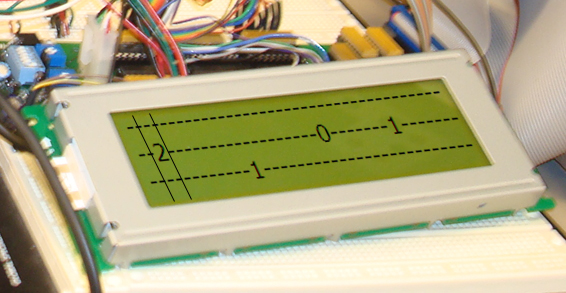
Objective | High Level | Hardware | Software | Results
Results of the Design
As a whole, our implimentation was able to be created very similarly to our desired design. Through expirimentation and calibration, we were able to successfully interface with the guitar in order to make it the central user controller for our game. The expansion board-based graphics display made a clear interface for which to display game content and menu selections. The MPC tools provided us with the necessary capability to drive the game to our specifications and create a sucessful demonstration.
The only lacking part of our design was the ability to throw interrupts based on the striking of the guitar strings. Initially, we had planned to use the strings as a signal the that a note was being played. This was planned to be implimented with condenser microphones placed underneath each individual string but because of integration issues, this aspect was left out of the final design. When calibrated correctly, the microphone can be used to detect vibrations of only the string it was underneath. Unfortuately, this aspect of our project had several problems. The circuit that contained the microphones showed odd behavior during testing, slowly increasing current draw while at the same time becoming less sensitive to noise/vibrations. This made it difficult to calibrate the microphones to detect the correct level of vibration. Additionally, we had not accounted for the fact that the MPC detected the string vibrations as multiple interrupts, created unexpected problems for our system.
Despite this problem, we created an integrated design that incorporated the rest of our components into a very similar game with similar gameplay. Instead of using the string detectors to allocate points, points were allocated based on finger positioning on the frets, using this to determine whether a user has played the correct note.

Conclusions
Over all, we were very pleased with the results of our project. Most of our devices preformed correctly in an integrated system. The components provided by the 373 Lab and the MPC microprocessor were very adaquate for completing our design. Given the opportunity to "try again," we would have allocated more time to system integration, a task that we regrettably underestimated during the course of the project.
We would like to extend our thanks to everyone who helped us along the way, with a very special thanks to our instructors and lab assistants Mark Brehob, Matt Smith and Chris Boguslawski.